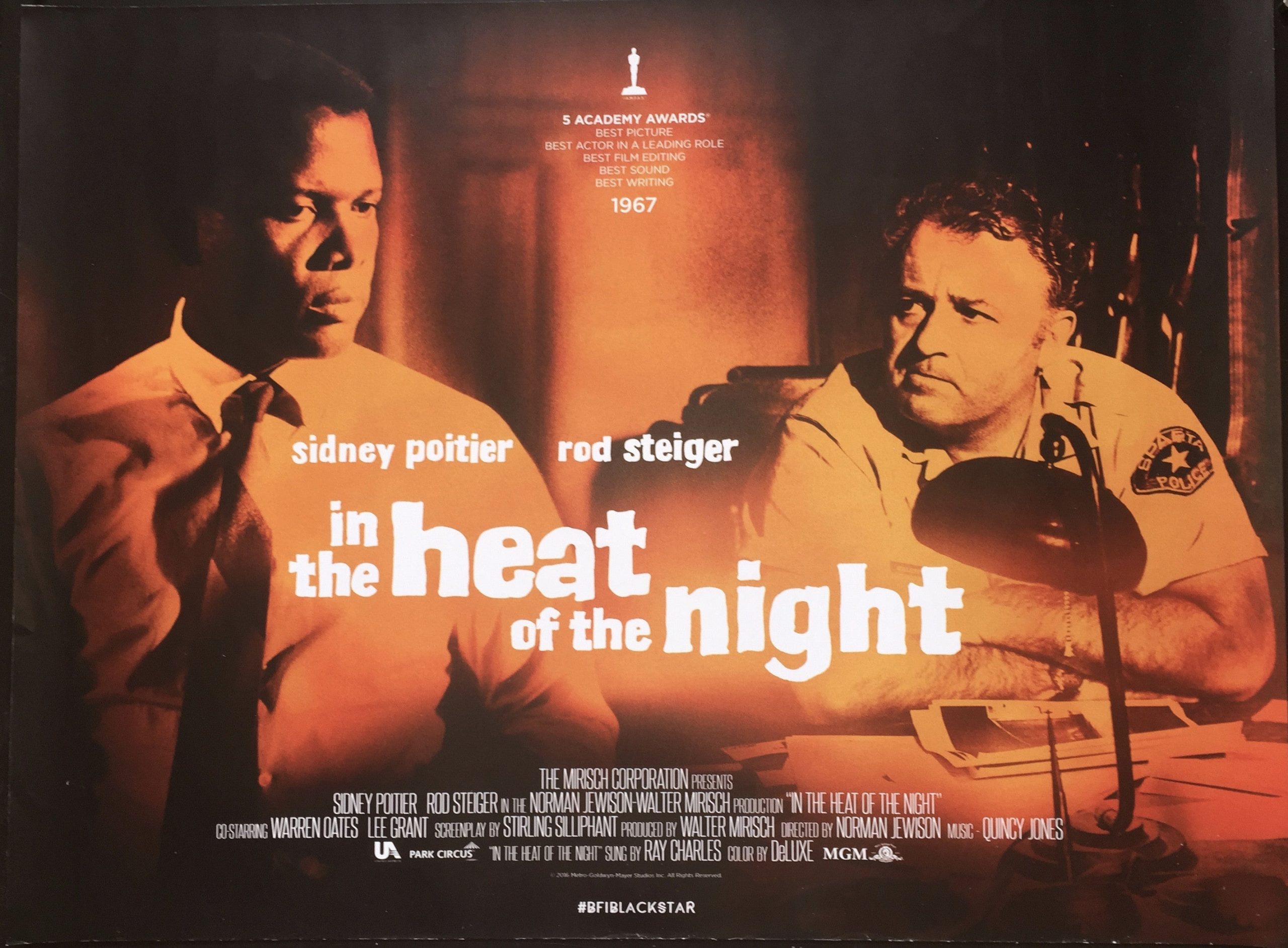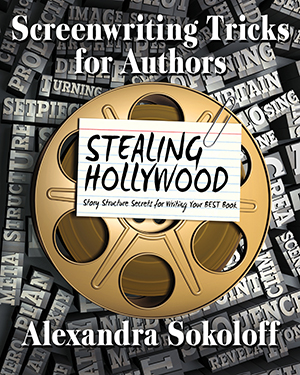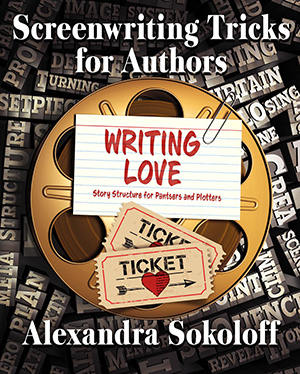Like I suspect a lot of people here, Craig and I ended up mourning the loss of the incomparable Sidney Poitier by watching In the Heat of the Night.
I often reference Heat as an example in workshops, but watching it again reminded me of what a great teaching movie it is, as long as you can bring yourself not to lose it over things like the 16-year-old-nympho subplot, unfortunately not as dated as we might like to tell ourselves.
When you’re writing a novel or script, it’s obviously vitally important to know your genre and the expectations of that genre. But sometimes it’s even more useful to identify the KIND of story it is. The KIND of story is a typical structural pattern that doesn’t fit neatly into a genre.
In the Heat of the Night is a classic Police Procedural, right? It’s also a Traditional Mystery, and a Fair Play Mystery—with all the suspects and clues right there for the audience to solve along with the detectives (which is rather rare in an American film, so if you’re looking for an example of a traditional Fair Play Mystery, Heat is a good one to have on your Tradiional Mystery list.)
But it’s also a BUDDY STORY, and even more particularly, one of the best filmic examples ever of what you could call an OPPOSITES HANDCUFFED TOGETHER story. So the movie has just as much in common with other OPPOSITES HANDCUFFED TOGETHER stories like Planes, Trains, and Automobiles; Rain Man; and The Heat.
If you’re writing a Buddy story or Handcuffed Together story in any genre, In the Heat of the Night is a great example of the emotional beats and other expectations of those story types.
Over decades of writing and teaching, I’ve found that the best thing that you can do to help yourself with story structure is to look at and compare in depth 5-10 (ten being best!) stories – films, novels, and plays – that are similar in genre to yours (learn the Master List process here). Identifying subgenre is a way to get deeper into the scenes and story elements of the story you’re writing.
And then another and possibly the most helpful thing you can do is identify What KIND of story you’re writing— which is a different thing from GENRE.
The KIND of story, or structural pattern of a story, does not always have anything to do with genre. Let me use a couple of examples to illustrate this.
- What do all three of these stories have in common- not just in common, but as their MAIN STORY ACTION?
Raiders of the Lost Ark
The Maltese Falcon
Romancing the Stone
They are MacGuffin Stories.
Every time I teach a workshop, I’m always careful to go over what a MacGuffin story is, because inevitably there is at least one person who is writing a MacGuffin story – and has no idea what a MacGuffin story is!
The MAIN STORY ACTION of each one of them is the pursuit by multiple characters of what Hitchcock called a MacGuffin: An object that every main character in the story wants.
- What do these three stories have in common as the MAIN STORY ACTION?
Tootsie
Mrs. Doubtfire
While You Were Sleeping
The MAIN STORY ACTION of each one of them is the main character pretending to be someone else to get what they want.
It’s a story pattern I call THE BIG LIE. You find another hugely popular variation of a BIG LIE in stories like The Proposal, where a couple has to PRETEND THEY’RE MARRIED (and ineviably, they fall in love).
So once you’ve identified the GENRE and SUBGENRE of your story, it’s hugely helpful to dig deeper and see what STORY PATTERNS might be working in it.
Because different kinds of stories have different and very specific structural arcs, and those structures have their own unique and essential elements which are incredibly useful to be aware of so you can use them for yourself.
– What genre would you call Inception? Something like a sci-fi thriller, right? It’s futuristic, it uses dream technology, it has thriller elements and action… but what really drives Inception is that it’s a CAPER story (or HEIST, or in this case, reverse heist), like the recent Inside Man, and classics like The Sting, Ocean’s 11, Armageddon, The Hot Rock, and Topkapi. The structure ofInceptionis a professional dream burglar gathering a team of professionals to pull off a big job, then training for and executing that job. That’s the action of the story. And that’s what made Inceptionstand out: it crosses a caper story with a sci-fi thriller.
– The Hangover (the brilliant first one, I mean) is a guy comedy. But the structure of the story is a TRADITIONAL MYSTERY: the groom has gone missing during a wild blackout night of a bachelor party, and his friends have to follow the clues to piece together what happened that night and get the groom back (before the wedding!). The action of the story is unraveling that mystery. So if you’re writing a story like The Hangover, you want to be looking at how mysteries are put together just as much as you want to be learning from comedies. Likewise, the Harry Potter books and movies are in the fantasy genre, but they are structured as traditional mysteries.
– Leap Year is a romantic comedy, but the structure of the story is a ROAD TRIP: the action of the story is a journey across Ireland. And if you’re writing a road trip story you can learn a lot from taking a look at road trip stories in all genres: Planes, Trains and Automobiles, It Happened One Night, Thelma and Louise, Rain Man, even Natural Born Killers.
So while it’s incredibly useful to know the general, Three-Act, Eight-Sequence structure, and it’s important to know the patterns of the particular genre you’re writing in, it’s sometimes even more useful to identify the KIND of story you’re writing within that genre.
Once you know the kind of story you’re writing, you can look at examples of that particular story pattern and get a sense of the structural elements and tricks common to that story pattern – the key scenes a reader wants and expects to see in these stories. A BIG LIE story, for example, will almost always have:
– threat of discovery,
– a confidante who knows the score,
– numerous tests of the hero/ine’s story,
– scenes of trapping the hero/ine into the role,
– scenes of the role starting to backfire,
– and of course, a big unmasking scene, usually at the climax of Act III.
Identifying these expected scenes and taking a look at how other storytellers have handled them is a great way to start brainstorming unique and fun scenes of your own.
So if you’re writing a romantic comedy with a Big Lie, try watching Tootsie, While You Were Sleeping, and Roman Holiday.
But also think about the possibility of watching stories with that pattern that are outside your own genre. You’ll learn more than you might think!





